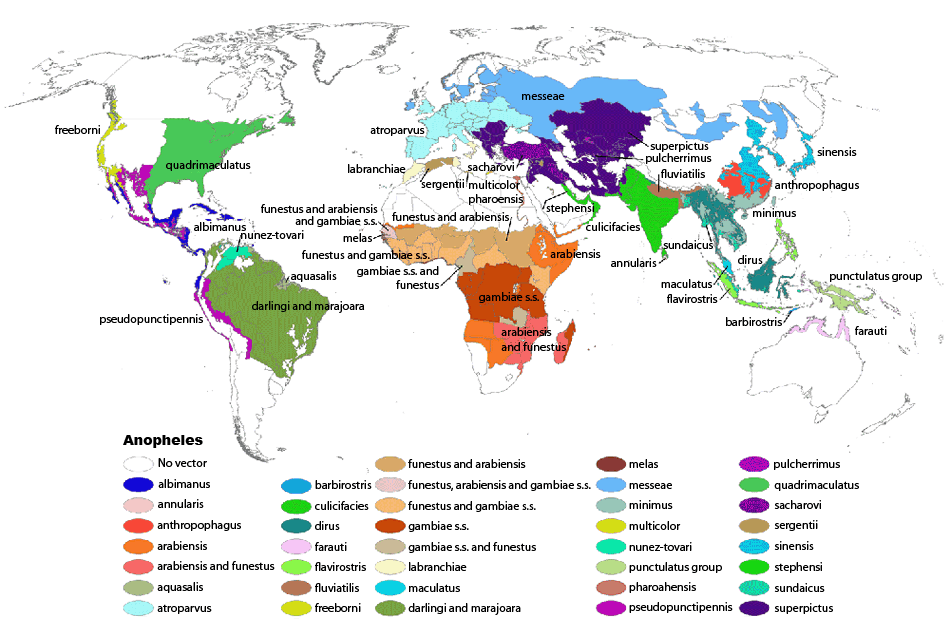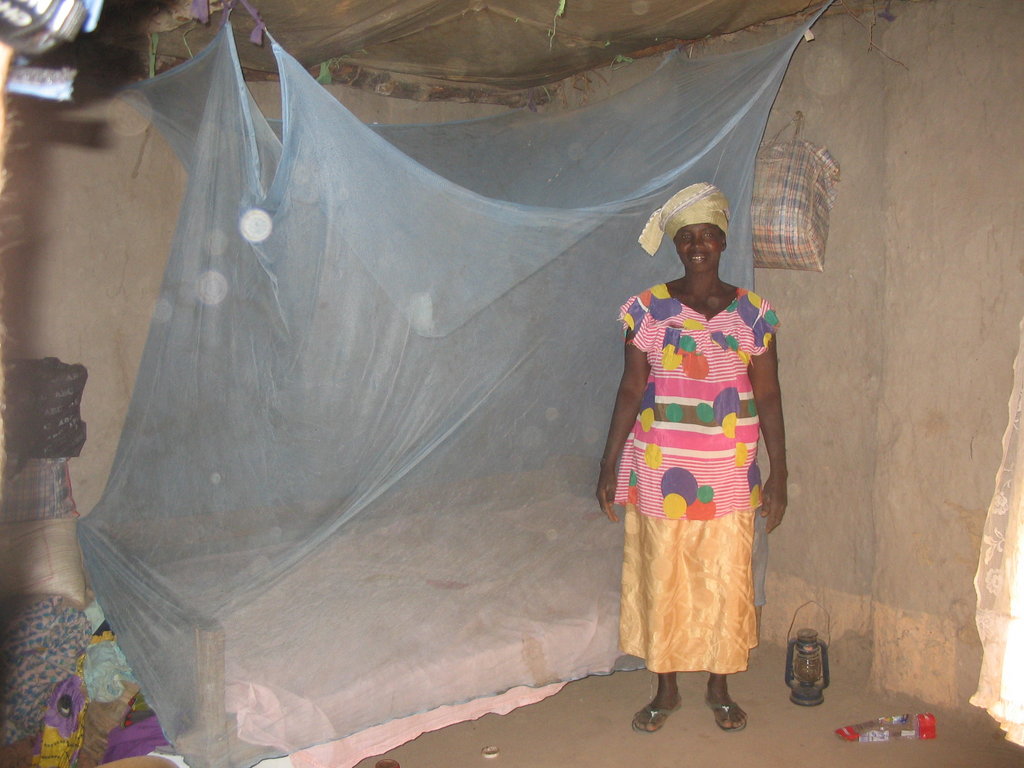Malaria is a disease that of the blood that is treatable but fatal if left untreated. Close to
half the world's population is at risk of contracting the disease. There are many different malaria parasites. The most common type is called plasmodium falciparum, and it is transmitted by the female
Anopheles mosquito. The mechanism of action is a parasite that requires both human and mosquito hosts to complete its life cycle. This
life cycle begins when an infected mosquito bites a person, transferring the Plasmodium parasites, in the form of
sporozoites, carried in the mosquito's saliva. Sporozoites then enter the human's liver cells. After a few days, the sporozoites become
merozoites and penetrate the red blood cells (RBC). They then divide and, usually every 48 or 72 hours, break out of the cells, which lyses the RBC and allows some of the merozoites to infect other RBC and therefore spread throughout the body.
Not all of the merozoites infect more RBC, however. Some form gametocytes. These are critical, because they are picked up by the bite of an anopheles mosquito. The life cycle of the parasite is now continued inside of the mosquito. Gametocytes divide via meiosis to form the male and female gametes, which undergo fertilization. The
zygote forms a cyst on the wall of the mosquito's gut and releases thousands of sporozoites. They migrate to the mosquito's salivary glands, ready to infect again.
Prevention a key component of combatting malaria. More to come on this topic.

